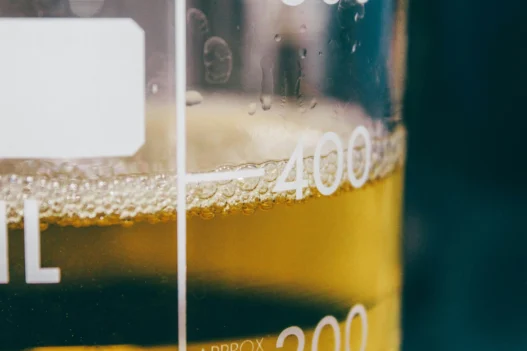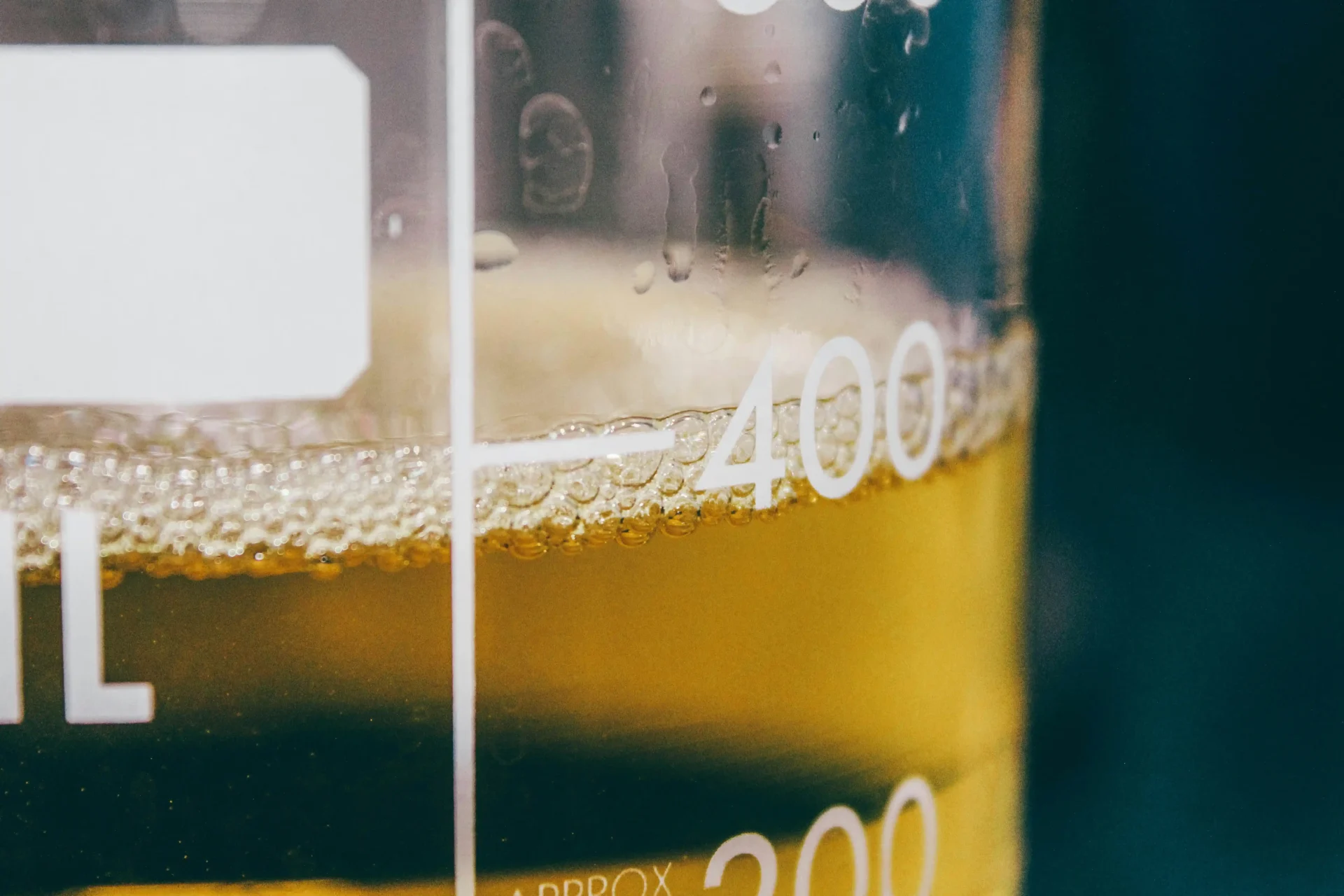3-Heptanol is a chemical compound that belongs to the class of alcohols. While it may not be a household name, 3-Heptanol plays a significant role in various industries and everyday life.
In the fragrance and flavor industry, 3-Heptanol is commonly used as a synthetic ingredient to impart pleasant scent and taste characteristics to products such as perfumes, lotions, and food items. Its fruity and floral notes make it a popular choice for enhancing the overall sensory experience.
Additionally, 3-Heptanol is utilized in the manufacturing of pharmaceuticals and as a solvent in chemical reactions. Its properties as a versatile solvent make it essential in various laboratory processes and industrial applications.
Overall, while 3-Heptanol may not directly impact our daily lives, its presence in numerous consumer products and industrial processes underscores its importance in enhancing our sensory experiences and facilitating essential chemical reactions.
Table of Contents:
- 💡 Commercial Applications
- ⚗️ Chemical & Physical Properties
- 🏭 Production & Procurement
- ⚠️ Safety Considerations
- 🔬 Potential Research Directions
- 🧪 Related Compounds
💡 Commercial Applications
3-Heptanol, a colorless organic compound, finds commercial and industrial applications primarily as a solvent in the manufacture of paints, varnishes, and coatings. Additionally, it is utilized as a flavoring agent in the food industry, imparting a fruity aroma to various products. Its ability to act as a wetting agent makes it suitable for use in the production of adhesives and cleaning agents.
In the realm of drug and medication applications, 3-Heptanol has shown potential as a pharmaceutical intermediate for the synthesis of various compounds. Its properties as a chemical building block make it valuable in the creation of pharmaceuticals with diverse therapeutic properties. However, more research is needed to fully explore its medicinal benefits and applications in the pharmaceutical industry.
Overall, 3-Heptanol’s versatility and chemical properties make it a valuable compound in commercial and industrial settings, as well as a promising candidate for drug and medication development. Its multiple applications underscore its importance in various industries and highlight its potential for future advancements in science and technology.
⚗️ Chemical & Physical Properties
3-Heptanol is a colorless liquid with a strong, pleasant odor reminiscent of roses. It is commonly used as a flavoring agent in food products.
The molar mass of 3-Heptanol is approximately 130.23 g/mol, with a density of about 0.82 g/cm³. This places it in a similar range as common food items such as sugar (molar mass of 342.3 g/mol, density of 1.59 g/cm³) and salt (molar mass of 58.44 g/mol, density of 2.16 g/cm³).
The melting point of 3-Heptanol is around -9 °C, while its boiling point is approximately 182 °C. In comparison, common food items like butter (melting point of 32-35 °C, boiling point of 150-200 °C) and water (melting point of 0 °C, boiling point of 100 °C) exhibit differing melting and boiling points.
3-Heptanol is sparingly soluble in water, but is miscible with organic solvents. It has a relatively low viscosity, similar to that of olive oil, making it less viscous compared to substances like honey or syrup.
🏭 Production & Procurement
3-Heptanol, also known as heptyl alcohol, is typically produced through the hydration of heptene, a common commercial precursor. In this process, heptene is reacted with water in the presence of a catalyst to yield 3-Heptanol as the primary product. The reaction may be carried out in industrial reactors at controlled temperature and pressure to optimize product yield.
3-Heptanol can be procured commercially from chemical suppliers who specialize in the production and distribution of organic compounds. The compound is typically available in bulk quantities, packed in drums or containers suitable for transport. Transportation of 3-Heptanol may involve the use of specialized chemical tankers or trucks equipped with proper safety measures to ensure compliance with regulations governing the transport of hazardous materials.
Alternatively, 3-Heptanol can be synthesized in laboratory settings by chemists and researchers through organic synthesis methods. This may involve the reaction of heptanal with reducing agents such as lithium aluminum hydride or sodium borohydride to yield 3-Heptanol. The synthesized product can then be purified and isolated through distillation or chromatography techniques before being used for various scientific or industrial applications.
⚠️ Safety Considerations
Safety considerations for 3-Heptanol include its flammable nature, requiring storage in a cool, well-ventilated area away from sources of ignition. It can cause skin and eye irritation upon contact, so personal protective equipment such as gloves and goggles should be used when handling this chemical. In case of ingestion or inhalation, immediate medical attention is necessary.
Hazard statements for 3-Heptanol include its potential to cause skin and eye irritation, as well as respiratory irritation if inhaled. Prolonged or repeated exposure may lead to more severe health effects. This chemical is also flammable and may be harmful if swallowed.
Precautionary statements for 3-Heptanol advise keeping this substance away from heat, sparks, and open flames to prevent fires or explosions. It should be stored in a well-ventilated area and kept tightly closed when not in use. In case of skin or eye contact, rinse thoroughly with water and seek medical advice. If ingested or inhaled, seek immediate medical attention.
🔬 Potential Research Directions
One potential research direction for 3-Heptanol is its investigation as a potential precursor in the synthesis of pharmaceutical compounds due to its unique chemical structure and potential pharmacological properties.
Furthermore, research on the environmental impact of 3-Heptanol could provide insights into its biodegradability, toxicity, and overall safety profile, which could inform regulatory decisions on its use in industrial applications.
Lastly, exploring the potential use of 3-Heptanol as a flavoring agent in food and beverages could lead to the development of new products with unique sensory profiles, thereby expanding its commercial applications.
🧪 Related Compounds
One similar compound to 3-Heptanol based upon molecular structure is 4-Heptanol. This compound, also known as heptyl alcohol, has a molecular formula of C7H16O and a structure in which the hydroxyl group is attached to the fourth carbon in the heptane chain. Like 3-Heptanol, 4-Heptanol is a colorless liquid with a slightly sweet odor.
Another compound with a similar molecular structure to 3-Heptanol is 2-Methyl-2-heptanol. This compound has a molecular formula of C8H18O and features a heptane chain with a methyl group attached to the second carbon. 2-Methyl-2-heptanol is a colorless liquid with a strong odor, commonly used as a solvent in various industrial applications.
Additionally, a related compound to 3-Heptanol is 3-Heptanone. This compound, also known as diethyl ketone, has a molecular formula of C7H14O and a structure in which the carbonyl group is attached to the third carbon in the heptane chain. 3-Heptanone is a colorless liquid with a fruity odor, often used as a flavoring agent in food products.







